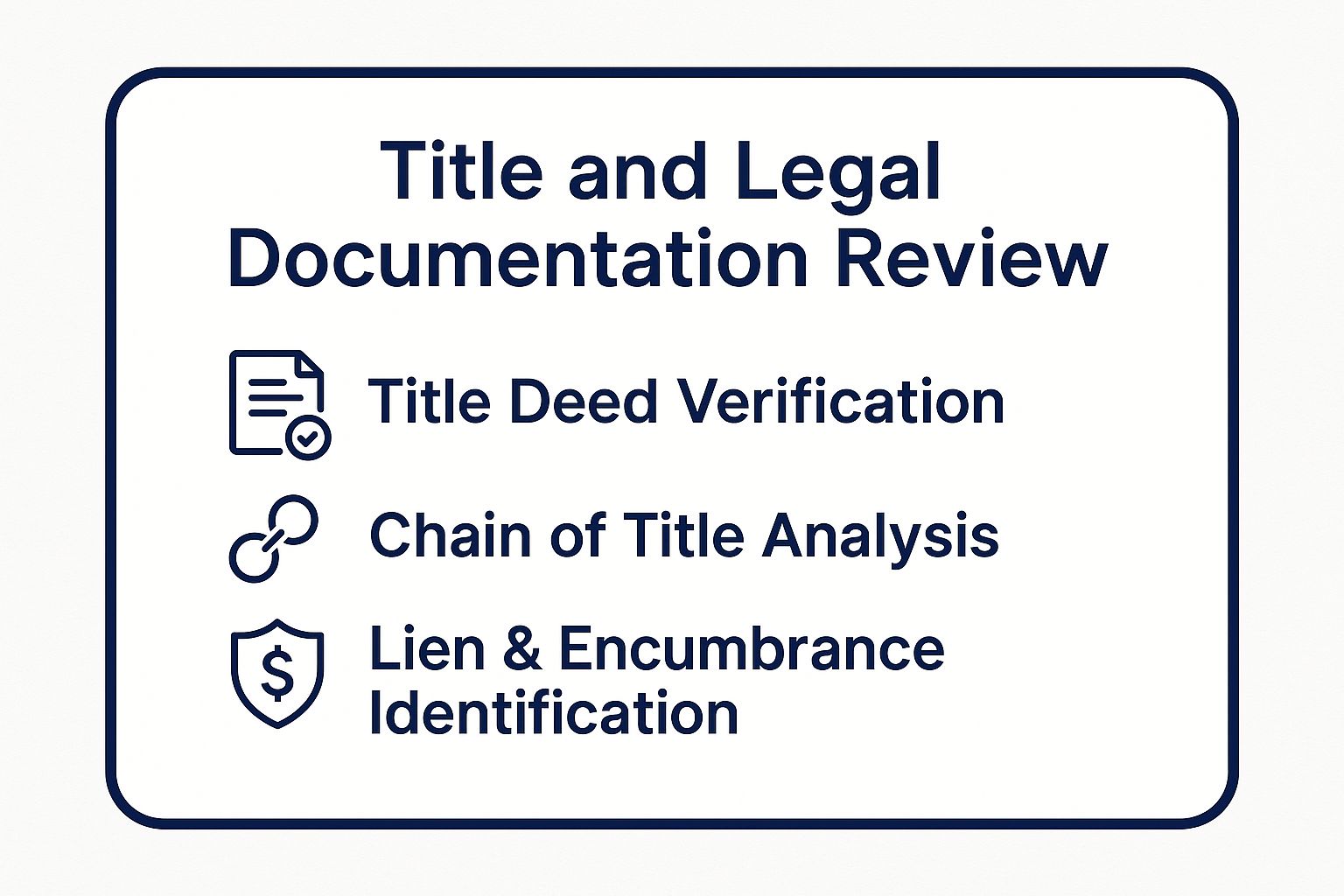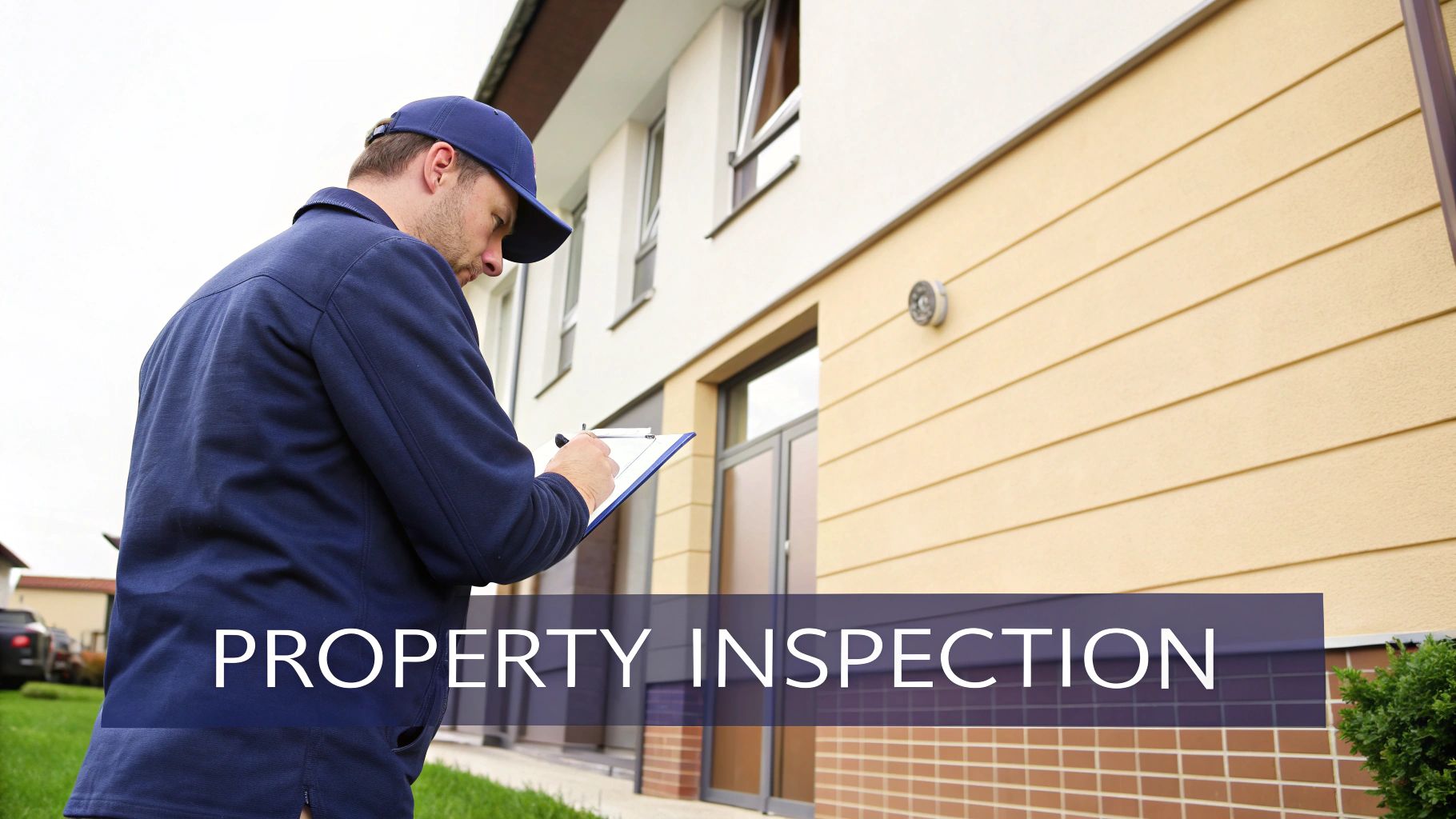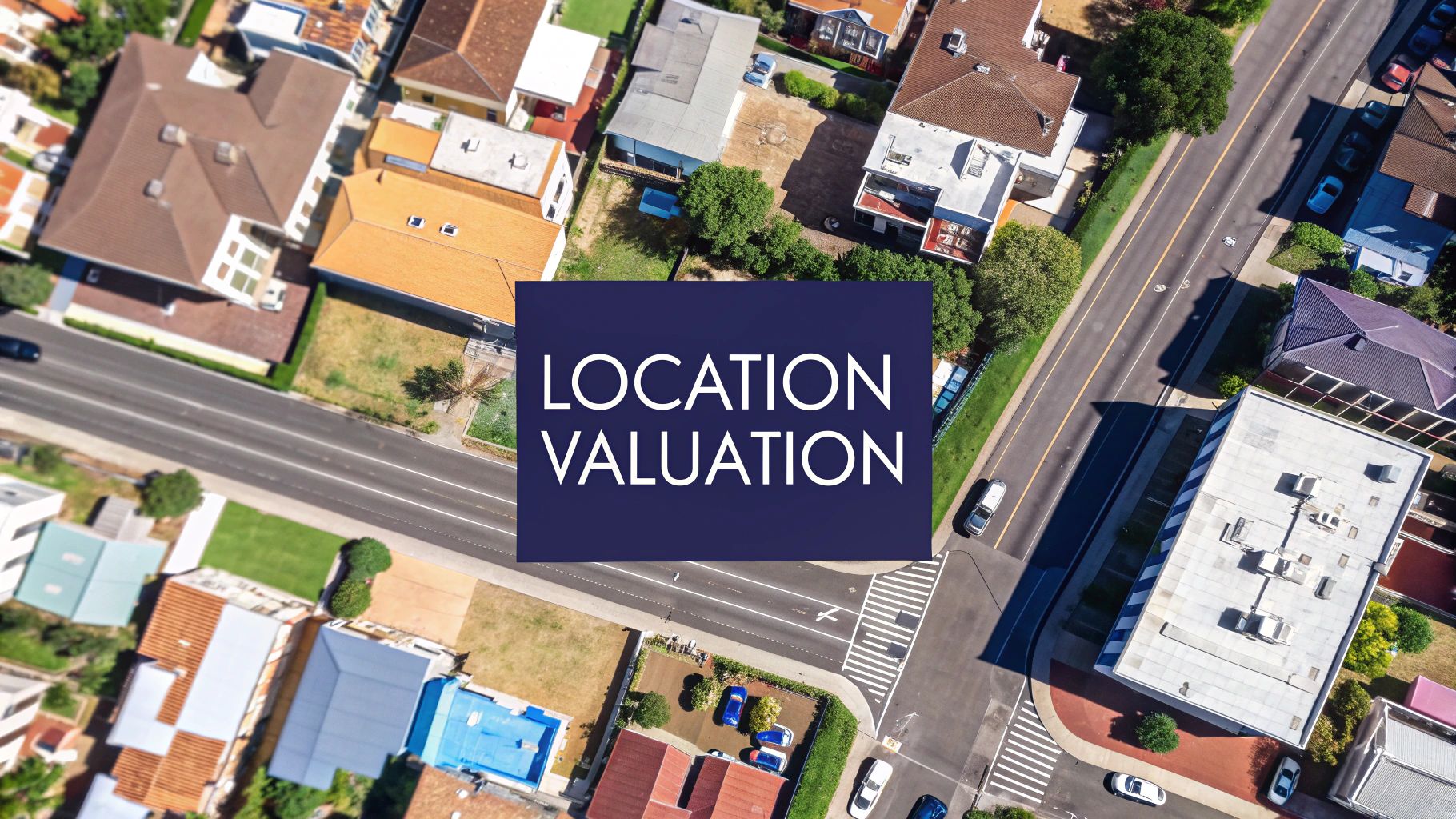Reading Time: 8 min | Good for Investor Personas: A, B
TL;DR: Key Investor Takeaways
Not a Trend, It's a Standard: Sustainable real estate development is no longer a niche "feel-good" strategy. It's an institutional-grade requirement for mitigating risk, attracting premium tenants, and driving higher asset valuations.
Value Creation, Not Cost: While there can be an initial premium, sustainable features like energy efficiency and smart water use directly reduce operating expenses, boosting Net Operating Income (NOI) and delivering a clear ROI.
Third-Party Proof Matters: To avoid "greenwashing," investors should demand verification through credible certifications like LEED, BREEAM, or WELL and ask sponsors for hard data on performance metrics like Energy Use Intensity (EUI).
Sustainable real estate development isn't just a buzzword—it has become a core principle of intelligent, long-term investment strategy. It’s the practice of creating and managing properties in a way that’s good for the planet, beneficial for the community, and—most importantly for investors— accretive to the bottom line.
For today’s investor, from a family office making its first real asset allocation to a seasoned institution, this shift is a must-have for building a portfolio that can stand the test of time.
Why Sustainable Development Is No Longer Optional
Thinking of sustainable real estate as an optional, ethics-driven add-on is a significant miscalculation in today's market. Ignoring sustainability is like buying a coastal property without considering rising sea levels—it’s a predictable and unnecessary financial risk. The conversation has shifted from "doing the right thing" to a disciplined focus on protecting asset value, optimizing building operations, and constructing a truly resilient portfolio.
This isn’t just talk. Three powerful forces are converging, impacting the bottom line for every real estate investor.
The New Market Drivers
The Rulebook is Changing: Governments worldwide are implementing tougher building codes, carbon taxes, and mandatory emissions reporting. As of Q2 2024, cities like New York (Local Law 97) and countries across the EU have set firm carbon caps. Assets that don't measure up face fines, costly retrofits, and difficulty in leasing or selling, creating a very real "brown discount" for underperforming properties.
Tenants and Buyers Have Spoken: The modern tenant, whether a Fortune 500 corporation or a family renting an apartment, demands healthier, more efficient spaces. A 2023 JLL study confirmed that 75% of commercial tenants now view sustainability as a key factor in their leasing decisions. This preference translates directly into higher occupancy, premium rents, and longer lease terms.
Climate-Proofing Your Assets: Extreme weather events and volatile utility prices are no longer abstract future problems; they are present-day operational risks that must be priced into any sound investment thesis. Smart design features like high-performance insulation, on-site solar power, and advanced water management aren't just amenities; they are fundamental tools for preserving an asset's value and operational continuity.
There’s a clear reason real estate is at the center of this storm: its massive environmental footprint. Buildings are responsible for a staggering 38% of global greenhouse gas emissions, according to the UN Environment Programme (as of 2023), stemming from both construction materials and operational energy.
This makes the industry a prime target for regulation and innovation. In response, savvy developers are using technologies like solar panels, high-efficiency HVAC, and sustainable materials not just to check a box, but to gain a significant competitive edge. You can dig deeper into real estate's environmental impact on wuertzrealestate.com.
Market Signal Box * The Data: A Q1 2024 report from CBRE noted that LEED-certified office buildings in major U.S. markets commanded a rental premium of 5.6% over their non-certified counterparts. * Interpretation: The market is actively pricing in the value of sustainability. Tenants are voting with their wallets for buildings that offer lower utility costs and healthier environments. * Investor Take: Stop thinking of sustainable development as an expense. It's a value-creation strategy. By embracing these principles, you de-risk your portfolio, attract better tenants, slash operational costs, and build future-proof assets positioned to outperform for decades.
The Building Blocks of Green Development
Sustainable real estate isn't a fuzzy, abstract idea. It's a practical, actionable toolkit for creating buildings that perform better and deliver stronger returns. When you analyze a property's entire lifecycle—from land acquisition to daily operations decades later—you see numerous points where smart, sustainable choices create tangible value.
This isn't about slapping on a single "green" feature. It’s about layering intelligent strategies that work in concert to slash risk and boost your bottom line.
By focusing on these core principles, developers and investors can build properties that are not just environmentally responsible but also financially robust and aligned with modern tenant demands.
Intelligent Site Selection
Here’s a simple truth: the most sustainable square foot is often one that has already been developed. Instead of breaking ground on untouched "greenfield" land, the smart move is to target "infill" or "brownfield" sites—underutilized lots or former industrial properties within existing urban cores.
This approach is inherently efficient. It leverages existing infrastructure like roads, utilities, and public transit, which dramatically cuts the project's carbon footprint and development costs. Furthermore, revitalizing these sites can transform a neighborhood, creating a halo effect of value that extends far beyond your property line.
Why It Matters (For Novice Investors) Infill development is a powerful risk-reducer. Projects in established areas typically face a more predictable and often faster approvals process. You’re also tapping into proven demand, which lowers the leasing risk compared to a speculative project on the urban fringe.
Radical Energy and Water Efficiency
What's one of the biggest drags on your Net Operating Income (NOI)? Day-to-day operational costs. Sustainable development tackles this head-on by designing buildings that sip, rather than gulp, energy and water. This is achieved through a combination of smart passive design and high-tech active systems.
Key energy efficiency strategies include:
High-Performance Building Envelope: Think of this as the building's thermal armor. Superior insulation, high-performance windows, and airtight construction prevent heat transfer, taking a massive load off HVAC systems.
Electrification and Renewables: Shifting from natural gas to highly efficient electric systems (like heat pumps) and adding on-site generation like rooftop solar panels can bring a building to or near "net-zero" energy consumption.
Smart Building Technology: Modern building management systems (BMS) use AI to optimize energy use in real-time, adjusting lighting and climate controls based on occupancy and weather conditions to cut waste without sacrificing comfort.
Smart water conservation strategies involve:
Low-Flow Fixtures: Simply installing efficient toilets, faucets, and showerheads can cut a building's indoor water use by 30% or more.
Rainwater Harvesting and Greywater Recycling: Collecting rainwater for irrigation or recycling water from sinks and showers for non-potable uses (like flushing toilets) reduces reliance on municipal water and lowers utility bills.
Healthier, Low-Carbon Materials
The materials used to construct a building account for a huge portion of its lifetime carbon emissions—a metric known as "embodied carbon." A sustainable approach prioritizes materials that are responsibly sourced, non-toxic, and have a lighter environmental footprint.
This means seeking materials with Environmental Product Declarations (EPDs), which function like nutrition labels for building products, detailing their lifecycle impact. The industry is shifting toward innovative materials like mass timber—an engineered wood that can replace steel and concrete, sequestering carbon within the building itself. Using recycled steel and low-carbon concrete also helps reduce a project's upfront carbon footprint. Investors can explore how modern methods like modular construction align with these goals in our article on the [9 key modular construction benefits for real estate investors in 2025](https://www.stiltsvillecapital.com/post/9-key-modular-construction-benefits-for-real-estate-investors-in-2025).
Biophilic Design and Community Integration
Ultimately, buildings are for people. That’s where biophilic design comes in—the practice of connecting building occupants to the natural world. This includes maximizing natural light, incorporating living green walls, using indoor plants, and ensuring views of the outdoors.
This isn't just aesthetic. Study after study demonstrates that biophilic design improves well-being, reduces stress, and boosts productivity. For a commercial tenant, that means a healthier, more engaged workforce. For residents, it means a more desirable and restorative home environment.
Investor Take: Properties that successfully implement biophilic design consistently achieve higher tenant satisfaction and retention. This translates directly to lower vacancy, reduced turnover costs, and the ability to command premium rents—all of which drive the asset's long-term financial performance.
The Financial Case for Building Green
Let’s get straight to the point. While sustainable real estate is an appealing concept, savvy investors always ask the critical question: What’s the ROI?
The answer, supported by a growing body of data, is that building green is a direct investment in superior financial performance. This isn't about trading profit for principles. It’s about recognizing that the market now pays a premium for efficiency, wellness, and resilience. Sustainable properties are, quite simply, better assets.
The blueprint below shows how thoughtful design choices create the foundation for a more profitable building.
As you can see, integrating sustainability from day one is the most intelligent path to unlocking long-term value, from lower operating costs to attracting and retaining the best tenants.
The Tangible 'Green Premium'
The "green premium" is no longer a theoretical concept; it's a measurable market reality. Across asset classes, certified green buildings are outperforming their conventional peers.
They command higher rents as top-tier corporate tenants willingly pay more for spaces that enhance employee wellness and reduce operational footprints. That demand flows directly to your rental income.
They also exhibit lower vacancy rates and higher tenant retention. A building that promotes well-being and aligns with a company's values is sticky. Less turnover means lower releasing costs, minimal downtime, and a more predictable cash flow stream.
This culminates in stronger valuations and higher sale prices. An asset that generates more income and retains tenants is inherently more valuable at exit. Appraisers and buyers recognize the reduced risk and superior performance, reflecting it in the final price.
Illustrative Example: Multifamily Development A sponsor is developing a 200-unit multifamily project. By investing an additional $1.5M upfront in a high-performance building envelope, solar panels, and smart water meters (a 3% cost premium), they achieve the following:
OpEx Savings: Reduced utility costs save $250,000 annually.
Rent Premium: The "green" brand and lower tenant utility bills justify a 5% rent premium, adding $300,000 in annual revenue.
Total NOI Lift: The project's Net Operating Income increases by $550,000 per year.
Exit Value Creation: At a 5.0% exit cap rate, the upfront $1.5M investment creates an additional $11M in asset value ($550,000 / 0.05). This is a powerful demonstration of how sustainable choices directly drive returns.
Boosting NOI Through Operational Savings
Beyond fetching higher rents, sustainable design directly impacts the bottom line by slashing operating expenses. This provides an immediate and tangible boost to your Net Operating Income (NOI).
The savings are concentrated in a few key areas:
Reduced Energy Use: High-performance insulation, energy-efficient windows, LED lighting, and smart HVAC systems can cut a building's energy consumption by 25% or more, taking a significant bite out of a major operating expense.
Lower Water Bills: Low-flow fixtures, smart irrigation, and rainwater collection can dramatically reduce water and sewer costs.
This operational efficiency also makes an asset more resilient to utility price volatility and new regulations. Given that real estate accounts for a significant portion of global energy consumption, many institutional investors now require sustainable features to future-proof their portfolios.
Investor Take: Lower operating expenses translate directly into a higher NOI. When evaluating a deal, a sponsor’s detailed plan to integrate these savings is a strong indicator of a sophisticated, forward-thinking strategy. To understand how these savings fit into the broader capital stack, see our [guide to commercial real estate financing options for investors](https://www.stiltsvillecapital.com/post/a-guide-to-commercial-real-estate-financing-options-for-investors).
Navigating Green Regulations and Certifications
For any disciplined investor, a developer’s promises are only as good as their proof. In sustainable real estate, that proof comes from two primary sources: globally recognized green building certifications and an expanding web of government regulations.
Think of certifications like LEED, BREEAM, or WELL as a project's audited financial statement for sustainability. They are a trusted, third-party validation of a developer's claims, providing a clear benchmark for due diligence and a powerful marketing tool for attracting high-quality tenants.
Understanding these systems is crucial for spotting true market leaders and avoiding "greenwashing"—where sustainability claims are more marketing than substance.
The Alphabet Soup of Green Certifications
While numerous certifications exist, a few dominate the institutional landscape. Each has a slightly different focus, and a developer's choice of certification reveals their strategic priorities.
LEED (Leadership in Energy and Environmental Design): Developed by the U.S. Green Building Council, LEED is the most recognized standard in North America. It uses a points system to score performance across categories like energy, water, materials, and indoor air quality. A high rating, like LEED Platinum, signals a comprehensive approach.
BREEAM (Building Research Establishment Environmental Assessment Method): The dominant standard in the UK and Europe, BREEAM is the world's longest-running assessment method. It covers similar categories as LEED but places greater emphasis on a building’s life-cycle impact and management processes.
WELL Building Standard: This certification is entirely focused on the health and well-being of occupants. WELL measures attributes that directly impact human health—air and water quality, lighting, comfort, and mental wellness. A WELL certification is a strong signal that a property is designed to attract and retain tenants who prioritize employee well-being.
GRESB (Global Real Estate Sustainability Benchmark): GRESB is different. It doesn't certify a single building but instead provides an investor-driven assessment of a real estate fund or company's entire ESG performance. A high GRESB score indicates that the sponsor has robust, entity-wide policies for sustainability and governance, reflecting institutional discipline.
Why It Matters (For Novice Investors) Don't get lost in the technical jargon. The key takeaway is this: a project with a major third-party certification has undergone a rigorous, evidence-based review. It’s a critical stamp of credibility that separates genuine sustainable assets from empty promises.
The Rising Tide of Regulation
Beyond voluntary certifications, a wave of mandatory regulations is reshaping the market. In the EU, the Sustainable Finance Disclosure Regulation (SFDR) and Corporate Sustainability Reporting Directive (CSRD) enforce strict transparency to combat greenwashing.
Starting in 2026, the EU’s Carbon Border Adjustment Mechanism (CBAM) will impose tariffs on imported materials like steel and concrete based on their carbon footprint. You can get more insights on how these trends are shaping commercial real estate by reading the 2025 sustainability trends report from Verdani.
This regulatory push is global. Major cities like New York (Local Law 97) have set firm carbon emissions caps for large buildings. In Asia, Singapore's Green Mark scheme is becoming a de facto requirement for new projects.
For investors, this means that understanding the local regulatory landscape is essential for risk management. A building that fails to meet upcoming standards could face significant fines or require expensive retrofits. Conversely, projects designed to exceed today's regulations are effectively future-proofed, positioning them as premium assets in an increasingly demanding market.
Investor Checklist: Questions to Ask a Sponsor
In sustainable real estate, a developer's claims are only as good as the strategy and data backing them up. To separate genuinely high-performing projects from those merely "greenwashing," you need to ask tougher, more specific questions during due diligence.
This checklist is designed to help you pressure-test a sponsor’s expertise and ensure their environmental goals are directly aligned with financial performance.
Use these questions to guide your conversation and cut through the fluff.
Key Diligence Questions for Sustainable Development Sponsors
Financial Integration: "How are your sustainability targets specifically reflected in the pro-forma financial model?" * A strong answer will point to exact line items showing projected savings from energy and water efficiency and how those savings boost the Net Operating Income (NOI). They won't be vague.
Return on Investment: "What is the projected ROI on specific green investments, like the high-efficiency HVAC system or solar panels?" * They will provide a clear breakdown of upfront costs versus long-term payback periods, quantifying the financial benefit of each major feature.
Risk Mitigation: "How does the design 'future-proof' this asset against rising utility costs, carbon taxes, or stricter building codes?" * They will explain how the design preserves the asset's long-term value by mitigating specific, foreseeable market and regulatory risks.
Embodied Carbon: "Can you quantify the reduction in embodied carbon for this project compared to a standard building of its type?" * Top-tier developers will reference a Whole Building Life Cycle Assessment (WCA) to model and track this critical, often-overlooked metric.
Performance & Reporting: "What systems will be used to monitor energy and water use post-completion, and how will that data be reported to investors?" * They will confirm plans for sub-metering and a Building Management System (BMS) and commit to regular, transparent reports sharing key metrics like Energy Use Intensity (EUI).
A sponsor who can answer these questions with confidence and specificity has likely integrated sustainability into their core strategy, not just their marketing materials.
For a deeper dive into the broader diligence process, our [guide to commercial real estate due diligence](https://www.stiltsvillecapital.com/post/a-guide-to-commercial-real-estate-due-diligence-the-investor-s-playbook) provides a comprehensive framework.
The Future of Sustainable Real Estate
Looking ahead, sustainable real estate is evolving beyond mere efficiency. We're entering an era of innovation where investors can find opportunities to generate alpha, de-risk assets, and enhance returns.
The conversation is shifting from doing less harm to creating buildings that actively improve environmental and social well-being, supercharged by breakthroughs in materials science and data analytics.
The Next Frontier of Innovation
A few emerging trends are set to redefine what a high-performing building looks like.
One of the biggest game-changers is mass timber construction. Unlike concrete and steel, which have a massive carbon footprint, engineered wood products like cross-laminated timber (CLT) act as a carbon sink, sequestering carbon for the life of the building. This transforms an asset from an emissions source into a climate solution.
At the same time, PropTech is embedding a new level of intelligence into buildings. Advanced AI can now optimize a building's energy use in real-time based on occupancy and weather forecasts. Research from Deloitte highlights that a majority of CRE leaders (as of 2024) see AI as critical for optimizing property operations and valuations.
Embracing the Circular Economy
Another transformative concept is applying circular economy principles to a building’s lifecycle. For decades, construction has followed a linear "take-make-waste" model. The future is about designing for disassembly—creating components that can be easily reused or repurposed at the end of a building's initial life, turning demolition waste into a valuable resource stream. This approach not only reduces environmental impact but also hedges against volatile material costs.
These innovations are creating a new class of assets that are not just cheaper to run and more attractive to tenants—they are fundamentally more resilient and built for the long term. Well-structured real assets built on these principles can be a prudent, resilient component of a long-term wealth strategy.
Frequently Asked Questions (FAQ)
Is sustainable real estate just more expensive upfront?
Not necessarily. While some high-performance materials may have a higher initial cost, a "whole-life cost" analysis often reveals a rapid payback period. Operational savings from energy and water efficiency cut monthly expenses, boosting the property's Net Operating Income (NOI). Furthermore, experienced sponsors can leverage green financing, tax credits, and other incentives to offset the initial investment. The focus is on the total value created over the life of the asset.
What's the difference between ESG and sustainable development?
Think of it this way: ESG is the overall investment framework, and sustainable development is a key execution strategy.
ESG (Environmental, Social, Governance) is the high-level framework investors use to evaluate a company's overall operational health and ethical standards.
Sustainable Development is the "E" in ESG brought to life—the tangible practice of designing, constructing, and operating properties in an environmentally and financially responsible way. A firm with a strong ESG policy demonstrates it through a portfolio of verifiably sustainable projects.
How can I verify a developer's "green" claims?
Verification is critical. Look for objective, third-party proof. Start with globally recognized certifications like LEED, BREEAM, or WELL, which require rigorous documentation. But don't stop there. Ask the sponsor for hard data: What is the projected Energy Use Intensity (EUI)? Can they quantify water savings? A credible partner will have this data readily available and will welcome the diligence. True sustainability is measurable.
At Stiltsville Capital, we believe disciplined underwriting and transparent reporting are the bedrock of successful real estate investment. If you're an accredited investor looking to explore how sustainable development can enhance your portfolio's resilience and returns, we invite you to schedule a confidential call.
Information presented is for educational purposes only and does not constitute an offer to sell or a solicitation of an offer to buy securities. Any offering is made only through definitive offering documents (e.g., private placement memorandum, subscription agreement) and is available solely to investors who meet applicable suitability standards, including “Accredited Investor” status under Rule 501 of Regulation D. Investments in private real estate involve risk, including loss of capital, illiquidity, and no guarantee of distributions. Past performance is not indicative of future results.












